Driving in Mexico: 16 Things You Need to Know

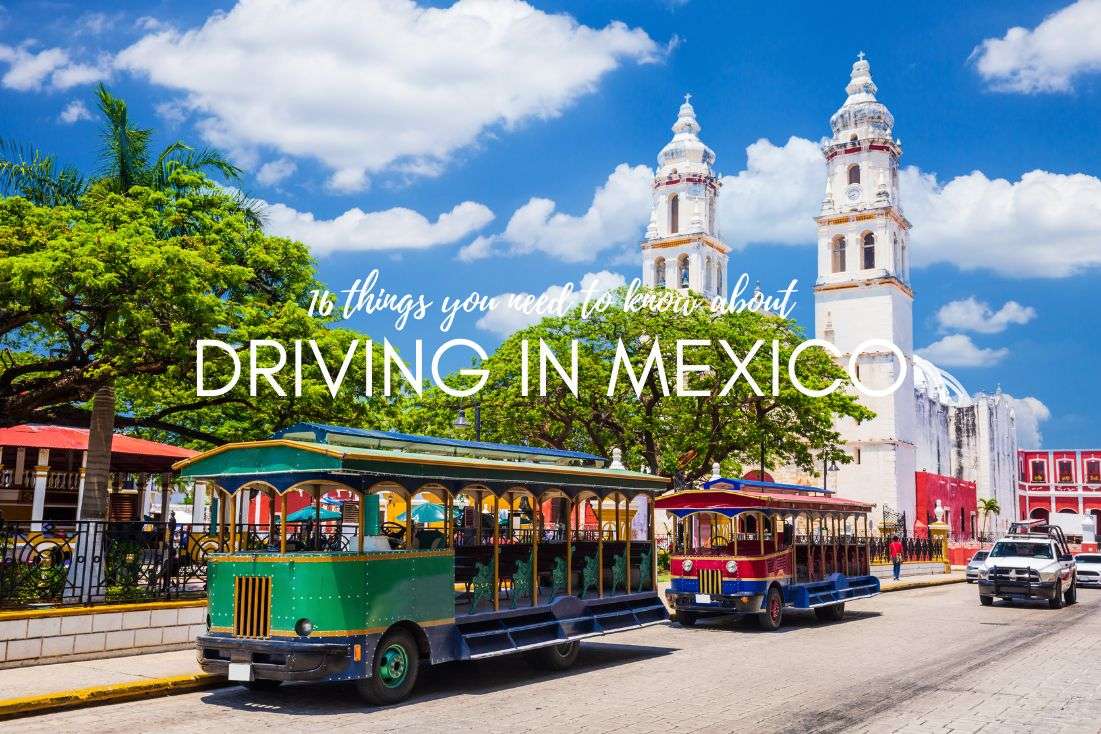
Driving in Mexico may seem scary at the beginning, but actually, it’s a piece of cake—as soon as you understand local driving rules, both written and unwritten.
1. How to travel around Mexico?
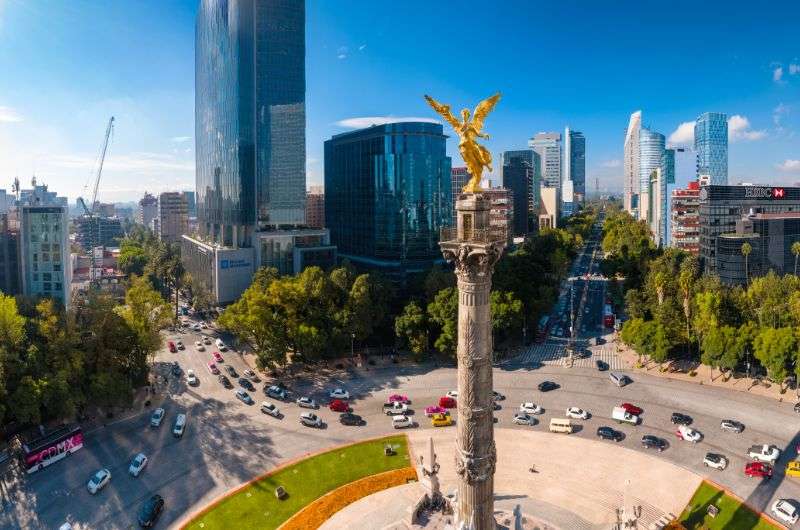
Traffic in Mexico City
Mexico covers a large area of land—1,972,550 square kilometers (760,000 square miles), to be more precise), and is over 3,200 kilometers (2,000 miles) long. It should be getting clear to you by now that it’s nonsense to travel only by car. For example, driving from Chihuahua in the north to Cancun on Yucatan would take 35 hours. That sounds terrible, doesn’t it?
It’s therefore much better to fly to a destination, rent a car at the airport and then travel in the area by car. When you have finished traveling around, return the car to the same place you picked it up and then head elsewhere by plane again.
Why should you return the car to the same place you picked it up? Find it out in my 33 Useful Mexico Travel Tips and save hundreds of dollars.
2. How to rent a car in Mexico?
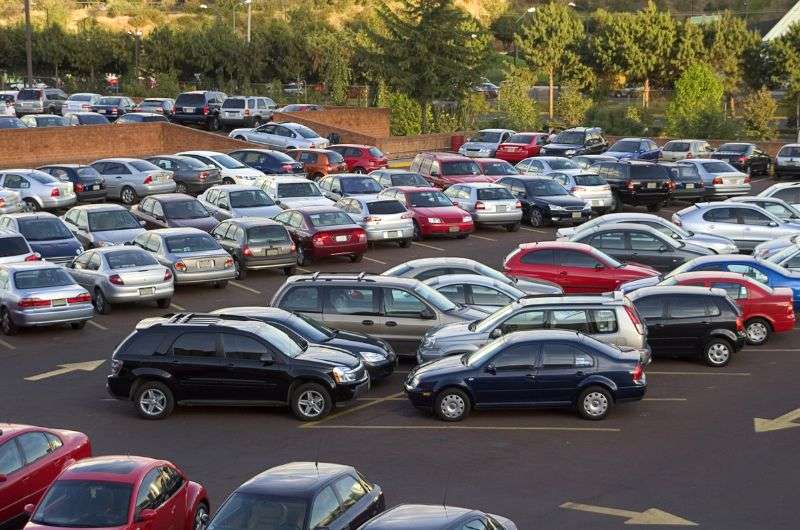
Watch out for scams in car rentals in Mexico!
Finding a good car rental in Mexico might be a tough nut to crack. Although there are many, a lot of them are—let me put it straight—scams.
I know what I’m talking about, I have experienced it first-hand. I booked a car in a local rental through Rentalcars. But when I arrived, the rental told me that Rentalcars canceled the reservation. And Rentalcars? They said it wasn’t true and the reservation was valid. The two sides kept putting guilt on each other and refusing to give me a car—or my money back. In the end, I solved it two months later through the complaint process.
You can avoid this problem by using only world-known car rentals (Alamo, Hertz, Avis, etc.), and by not booking a car in advance but rather visiting the rentals on the spot.
You should also know that a deposit is required in car rentals in Mexico. It’s usually around 15,000 pesos (750 US dollars). The rental can keep it up to two weeks so if you rent several cars in a row, make sure you have sufficient funds on your credit or debit card. I can’t think of a better way to destroy your vacation than to get stuck in Mexico with no money left.
3. Use highways instead of roads
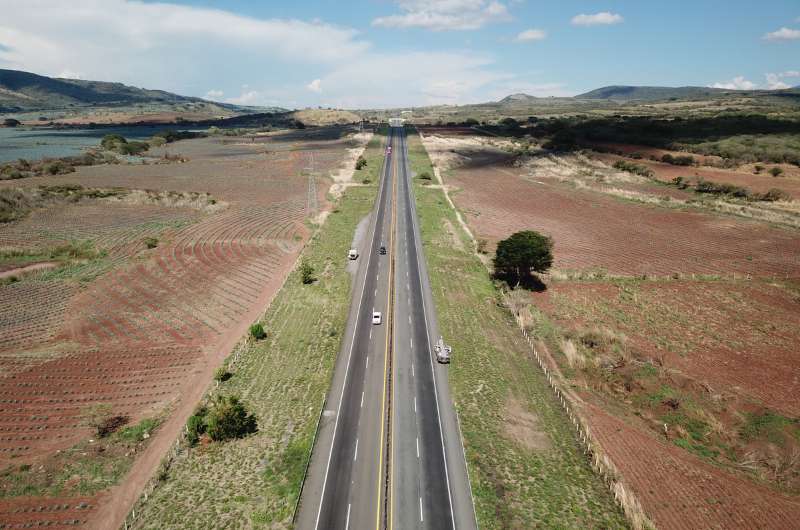
Mexican highways are much better option!
Whether you're driving to the capital Mexico City, Puebla, or for example other places in Mexico I recommend in a separate article - I will not lie: driving on Mexican roads is an action-packed adventure, as they are strewn with bumps and large potholes. If you don’t want to play at an action movie hero, I recommend trying Mexican highways instead. They are clean, safe and fast. And Green Angels take them even to the next level. Check out some other useful Mexico travel tips.
Who are Green Angels? They’re an assistance service, called Los Angeles Verdes in Spanish. Should you get in trouble, call them by dialing 078—they regularly patrol Mexican highways and will arrive and help you in a short time. If you don't speak Spanish, you should have your Google Translator prepared because Mexican people basically speak only Spanish - that is one of the 12 facts about Mexico you should definitely know.
However, a light purse is a heavy curse on the highways in Mexico. Toll gates will charge you circa 200–500 Mexican pesos (10–25 US dollars) per 100 kilometers (62 miles). My eyes were on stalks when I saw it, as everything else was pretty cheap in Mexico.
4. Beware of topes
It would be a deadly mistake to suppose topes won’t get you. They will, and trust me: from the moment you step foot in Mexico to the second you leave, you will hate them.
What are they? Topes are insidious high-speed bumps that love to emerge out of thin air whenever you don’t expect them. They are high, could damage your car, and are usually irrationally located in the middle of nowhere or right behind the corner.
5. Age restrictions in car rentals
The age restrictions in car rentals vary greatly. Most often, the minimum age to rent a car is 25 in Mexico, but you might also find some rentals that will rent cars to younger drivers—for a surcharge.
On the other hand, some car rentals have a maximum age requirement. The specific conditions depend on the rental but usually it’s 75.
6. Crossing the border from the US to Mexico? This is what you need to know
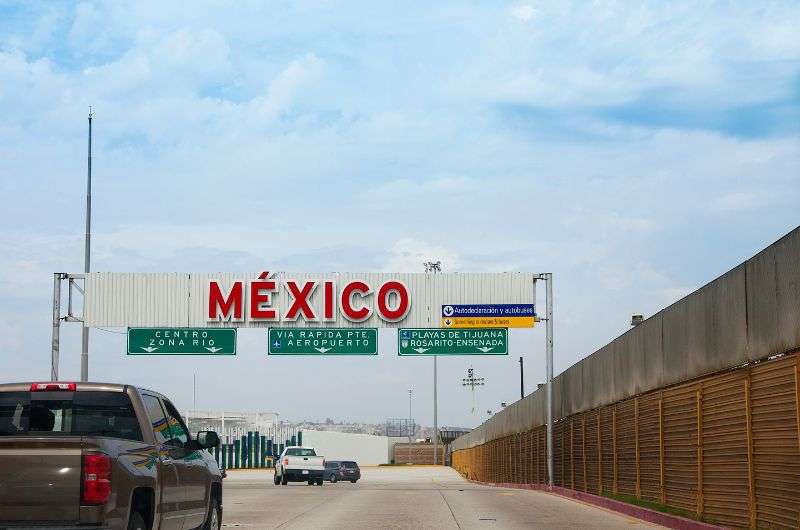
Get ready to enter Mexico!
Crossing the US border into Mexico? This is a short checklist of what you’ll need:
- Passport
- FMM (Mexican Immigration Card)—a short document you’ll have to fill out.
- Temporary Vehicle Importation Permit—you can buy it at the border or online.
- Tourist Car Insurance Policy—your US car insurance is not valid in Mexico so you will need a Mexican insurance policy to help you pay for car repairs and medical treatment in case anything happens.
Find other useful information before traveling to Mexico in the 12 facts about Mexico article.
7. Speed limits in Mexico
Speed limits in Mexico are:
- parking lots, crowded streets and residential areas: 10 km/h
- streets: 60 km/h
- arterial roads: 60–80 km/h
- main roads: 70 km/h
- highways: 110 km/h
I expected that the traffic would be loose and chaotic, and it surprised me that it wasn’t. Everyone followed the rules, rather more than less. It’s probably caused by the smart combination of:
- police - How not to get pulled over? Find out in an article about Mexico travel tips.
- topes
- drivers’ good manners
If you’re playing at a cowboy, you’re asking for trouble, and trouble is what you’ll get! But do you know what people in Mexico are really like? You can read it in a separate article, together with other interesting facts about Mexico.
8. Traffic signs you should know before driving in Mexico
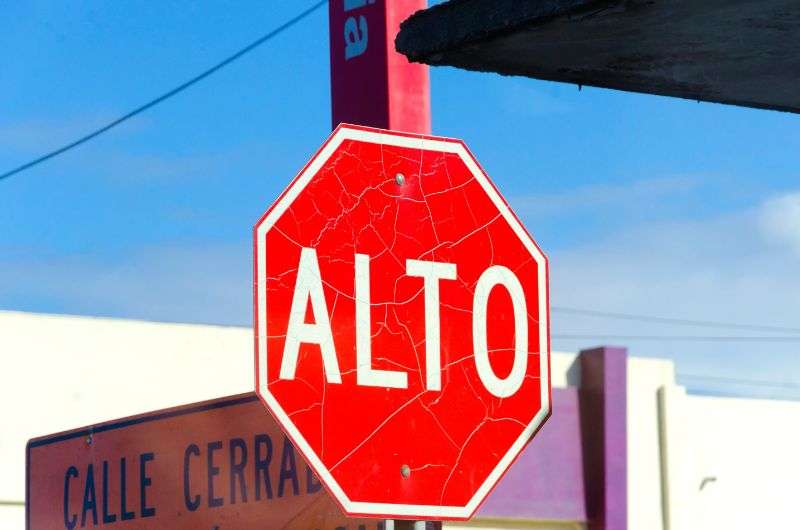
Stop!
Especially when you're planning to drive in Mexico City, it's useful to know basic traffic signs. You can differentiate the traffic signs in Mexico according to their colors:
- Blue traffic signs are informative. They help you identify parking lots and some services. The most important one is a white “E” on a blue background. It says Estacimiento—parking—and means “Parking permitted” or “Parking lot is here”.
- Yellow traffic signs are warnings. They alert you of pedestrians, falling rocks, road narrows and other important things.
- Red signs inform you of mandatory rules, such as compulsory turning or giving way to all traffic. The most important one is ALTO—STOP.
9. Right-hand traffic
Right-hand traffic is practiced in Mexico. That means cars drive on the right side of the road and give way to the vehicles on the right.
10 Does Mexico accept your driver’s licence?
Driver’s licences from the US and Canada are valid in Mexico. Some rental companies also accept licences issued elsewhere—check with your rental to find out. Generally, the path of least resistance, if you’re not from the US or Canada, is to obtain an International Driving Permit.
An IDP is an international travel document valid in over 150 countries of the world, and contains all important information in several languages. You can get your IPD online, for example at the website of International Drivers Association.
If you already have an IPD, check its validity—it’s usually very short, from one to three years.
11. How much is the fuel in Mexico?
In 2020, the average price of gasoline was 18 Mexican pesos (0.90 US dollars) per liter. The average price of Diesel is 21 Mexican pesos (1 US dollar) per liter. It’s good to have some cash with yourself because sometimes, the cash registers at the fuel stations are down.
12. Don’t argue with the police
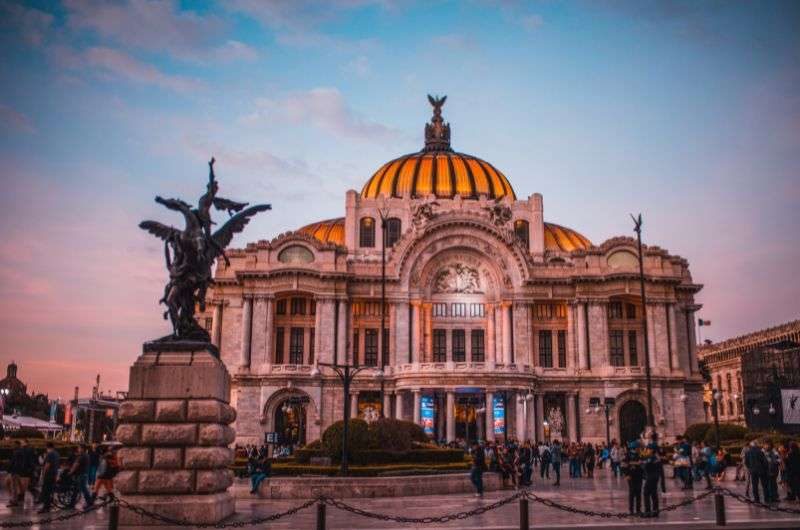
Mexico has its own rules
The police in Mexico are famous for stopping cars for every little violation of driving rules. Don’t argue with them—that road leads to nowhere. Or, more likely, that road leads to jail. Mexican policemen have the right to confiscate your car and take you in custody.
Some policemen will fine you, whereas others might ask for a bribe. It’s very uncomfortable, but unfortunately pretty common. The policemen usually want around 600 Mexican pesos (30 US dollars) but if they see you’re a gringo, they may try to ask for huge amounts of money. They asked me for 6,000 pesos (300 US dollars) in Puebla, and it was really hard to talk my way out of it.
If the policemen demand to see your passport, only show it to them—don’t put it in their hands. They might keep it until you pay what they ask for. Of course, it’s not black and white, and there are bad cops and good cops. But do you want to risk it?
13. Get ready for the zones of mist
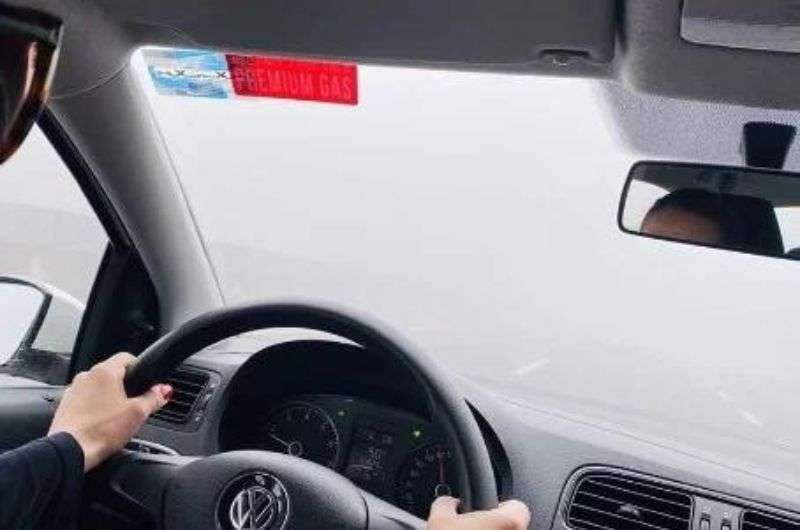
Driving in zona de niebla is not a very pleasant experience.
When driving in Mexico, beware of zonas de niebla, or the zones of mist. The name sounds mysterious, right? But don’t imagine poetic clouds of fog hovering above the countryside. In fact, the zones of mist are rather annoying—if you drive into one, there is an impenetrable mist, and you can see only a few meters ahead.
It happens mostly in the mountains, and it could slow you down significantly. To keep it between the ditches, you have to drive at the maximum speed of 30 km/h (18 mph), and sometimes even have to stop completely. Wherever you’re going, don’t expect to get there in time.
14. Driving in Mexico is safer in daylight
In your own best interest, don’t drive at night. Much more road accidents happen, because of:
- lonely animals straying on the dark roads
- pedestrians thinking walking in black clothes on a black road is a good idea
- vehicles without lights, obviously not interested in their own safety
But also:
- topes that you absolutely can’t see (Remember when I said you’ll hate them? This is one of the cases.)
- occasional thieves and bandits
To add on, the emergency services are limited at night in some areas of Mexico, so if you break your car and get stuck somewhere… Well, good luck. Enjoy spending the night in the car. I’ve done it, and I can confirm: Car’s not the most comfortable place to sleep.
15. Parking
Parking lots in Mexico are usually paid, but very cheap. You may also park in the streets free of charge—but not on the sidewalks. Be ready that, in certain locations, finding a good parking space is like catching lightning in a bottle.
Luckily, you will stumble upon valets willing to park the car for you again and again—for only one dollar or so. Especially if you’re a European, valet parking may seem strange to you and you might prefer parking yourself. But I view it as an opportunity to kill not two, but three birds with one stone:
- You’ll get rid of the struggle to find a parking space.
- You’ll save some time, as the valet knows exactly where to go.
- You’ll do a good deed, as one dollar may mean a lot to someone in Mexico.
16. Get sickness treatment ready
Do you suffer from car sickness? Mexico might not be the best place for you. Local roads are full of curves and serpentines. But if you survive, beautiful views of the landscape will be your reward—for example in Canyon Sumidero National Park, where serpentines lead to beautiful watchtowers.

So chup chup! Get in your car and drive to see the beauties of Mexico!
This post contains affiliate links. I earn a small commission if you make bookings through my links, at no additional cost to you. This helps keep this blog free, thank you!
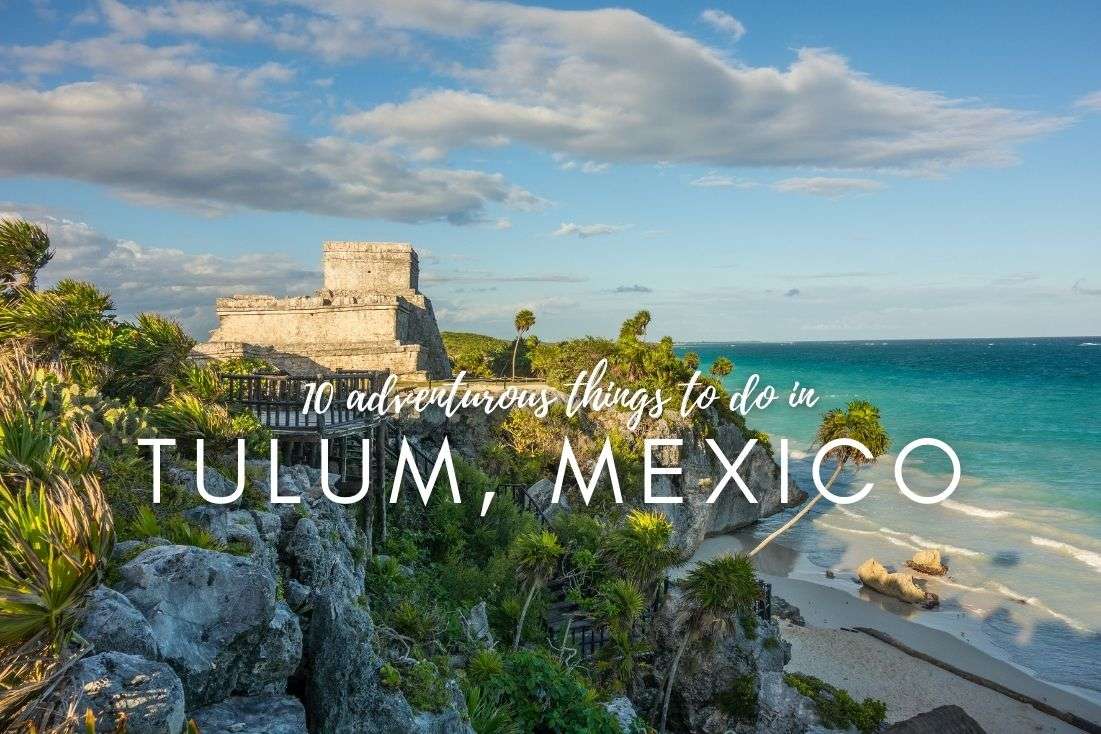
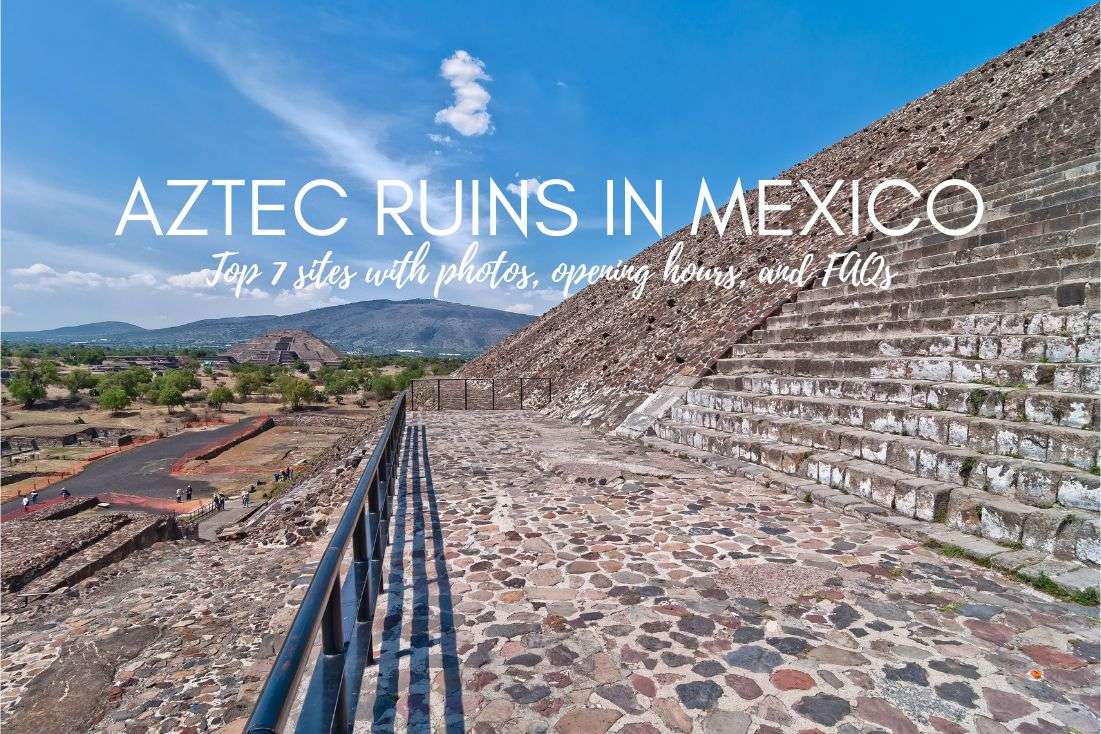





Comments
Thoughts? Give us a shout!